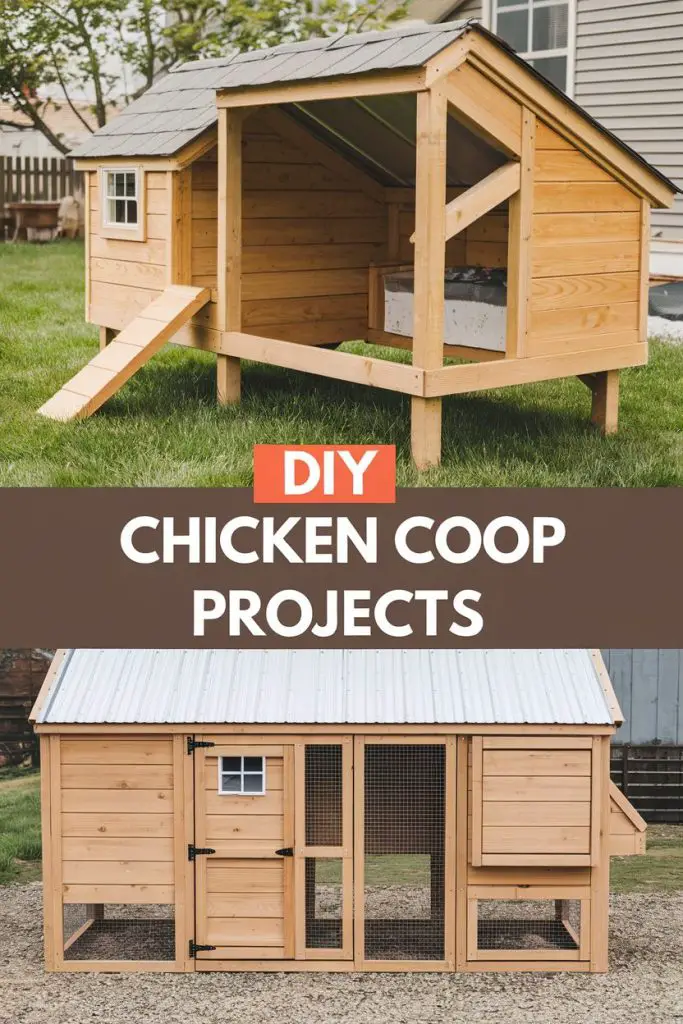
Building a chicken coop can be an enjoyable and rewarding project for anyone interested in raising chickens. With the right plans and materials, creating a safe home for chickens is easier than it seems. This article presents five easy DIY chicken coop ideas that cater to various skill levels and budgets.
These coop designs not only keep chickens secure but also offer a fun way to express creativity. From simple structures to more elaborate setups, each idea encourages homeowners to customize their coops while ensuring their feathered friends are happy and healthy. These projects are perfect for beginners looking to dive into chicken keeping.
1) Build a coop using reclaimed wood for a rustic look
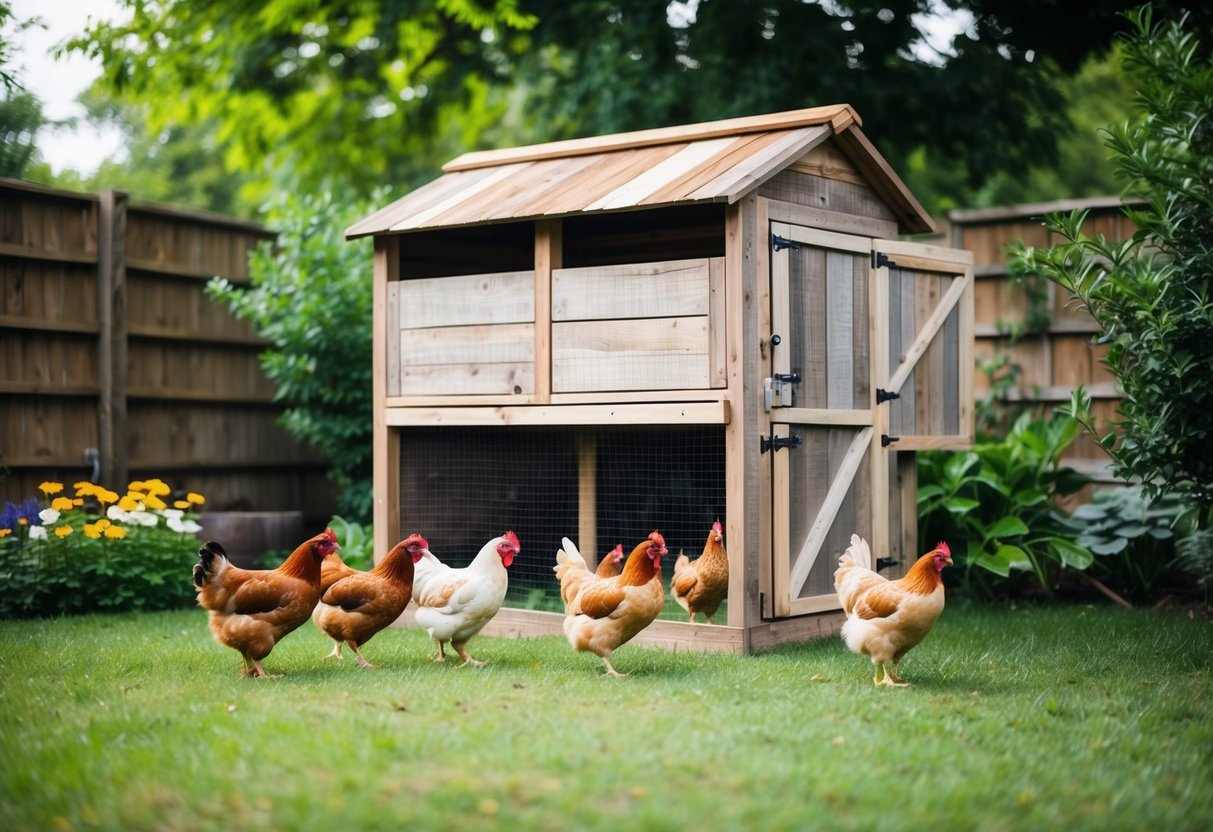
Building a chicken coop from reclaimed wood gives it a charming, rustic appearance. It is also an eco-friendly choice, making use of materials that might otherwise go to waste.
The wood can be sourced from old pallets, barns, or furniture. This not only saves money but also adds character to the coop.
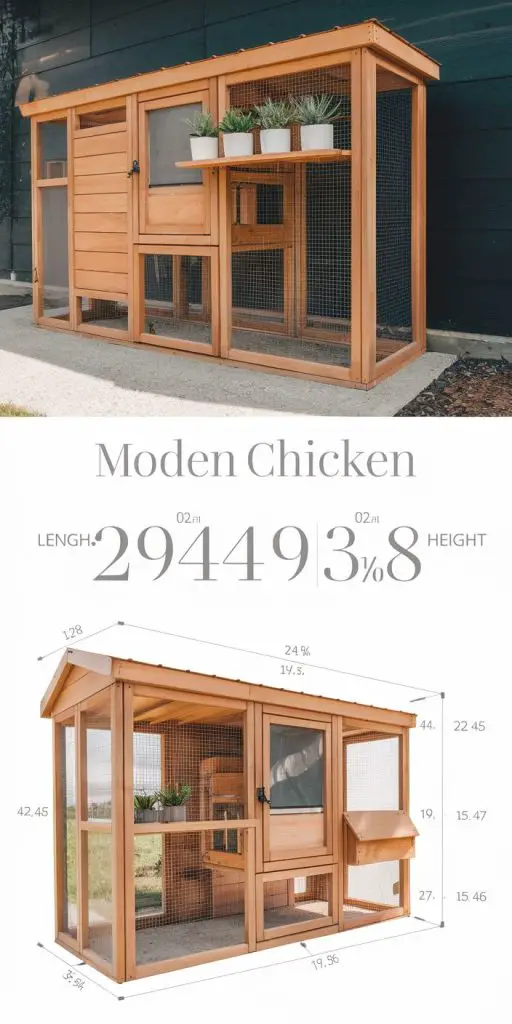
For a solid structure, make sure the wood is clean and free from harmful chemicals. With some basic tools and creativity, anyone can create a unique home for their chickens.
2) Incorporate large doors for easy cleaning access
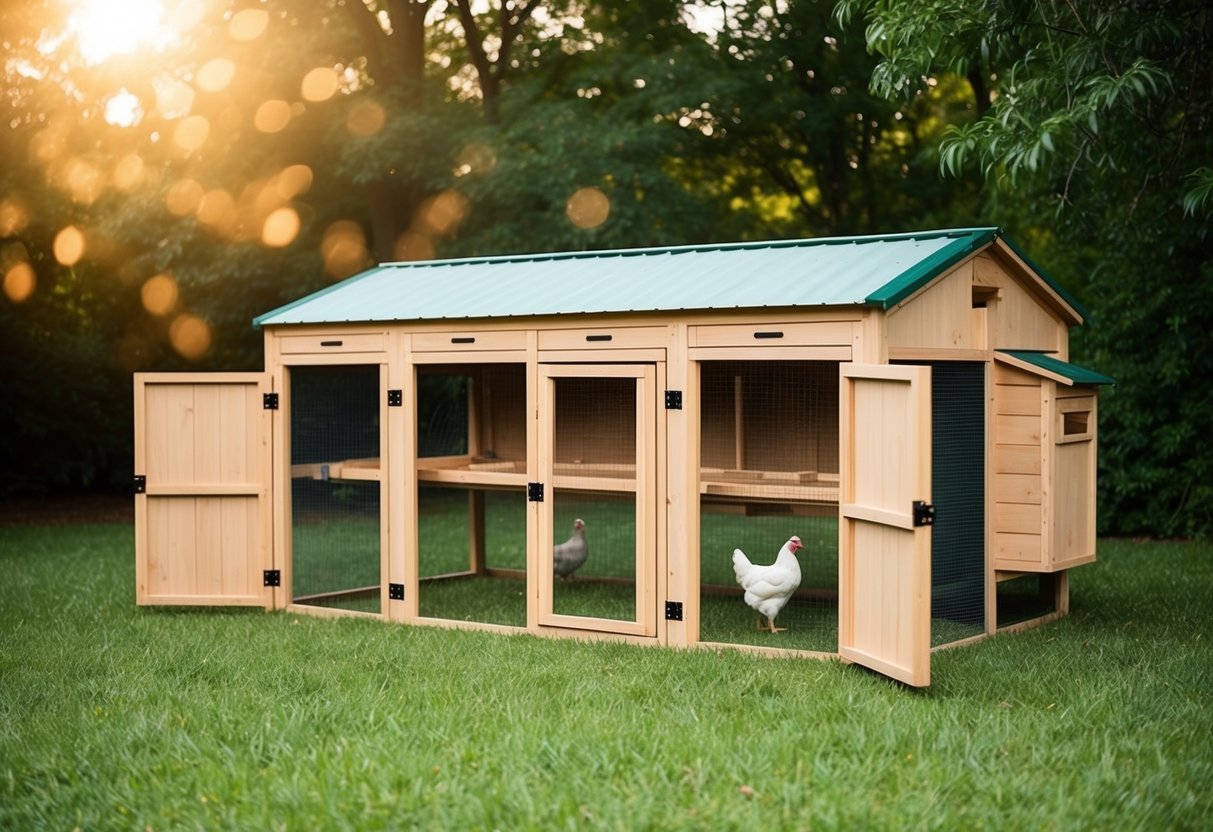
Large doors in a chicken coop can make cleaning a breeze. They allow for quick access to the interior, making it easier to reach all corners of the coop.
When planning the coop design, consider placing these doors on both sides. This placement helps with airflow and also lets light in, creating a brighter space for the chickens. Easy cleaning means a healthier environment for the flock.
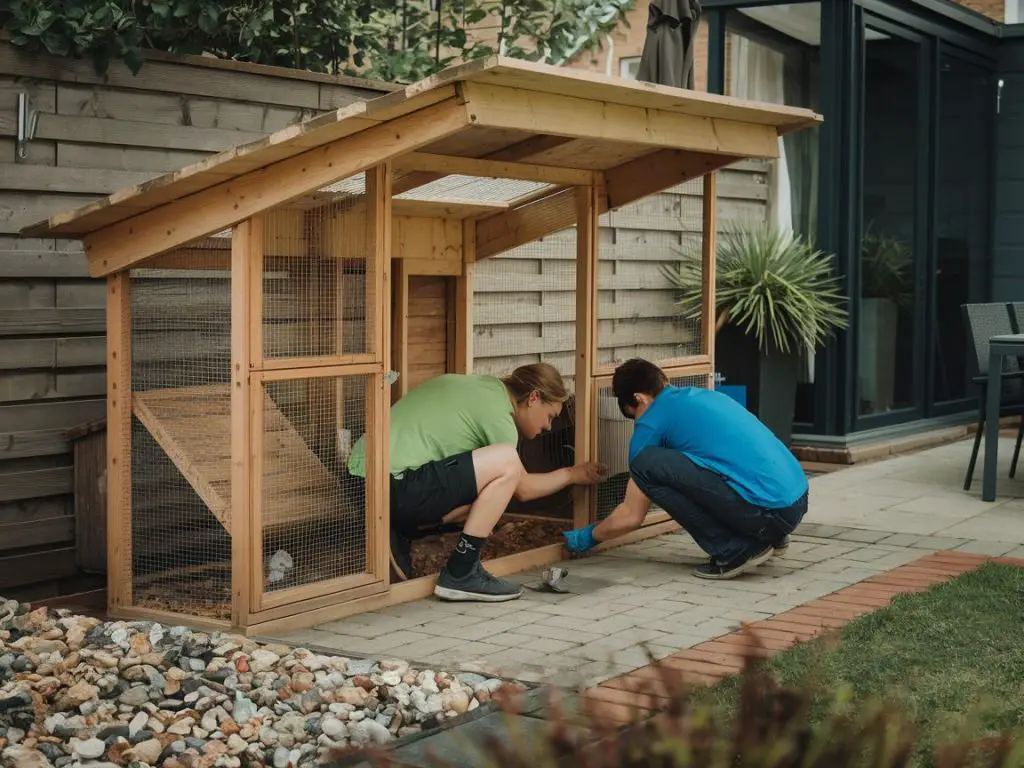
3) Add a small radiant heater for colder months
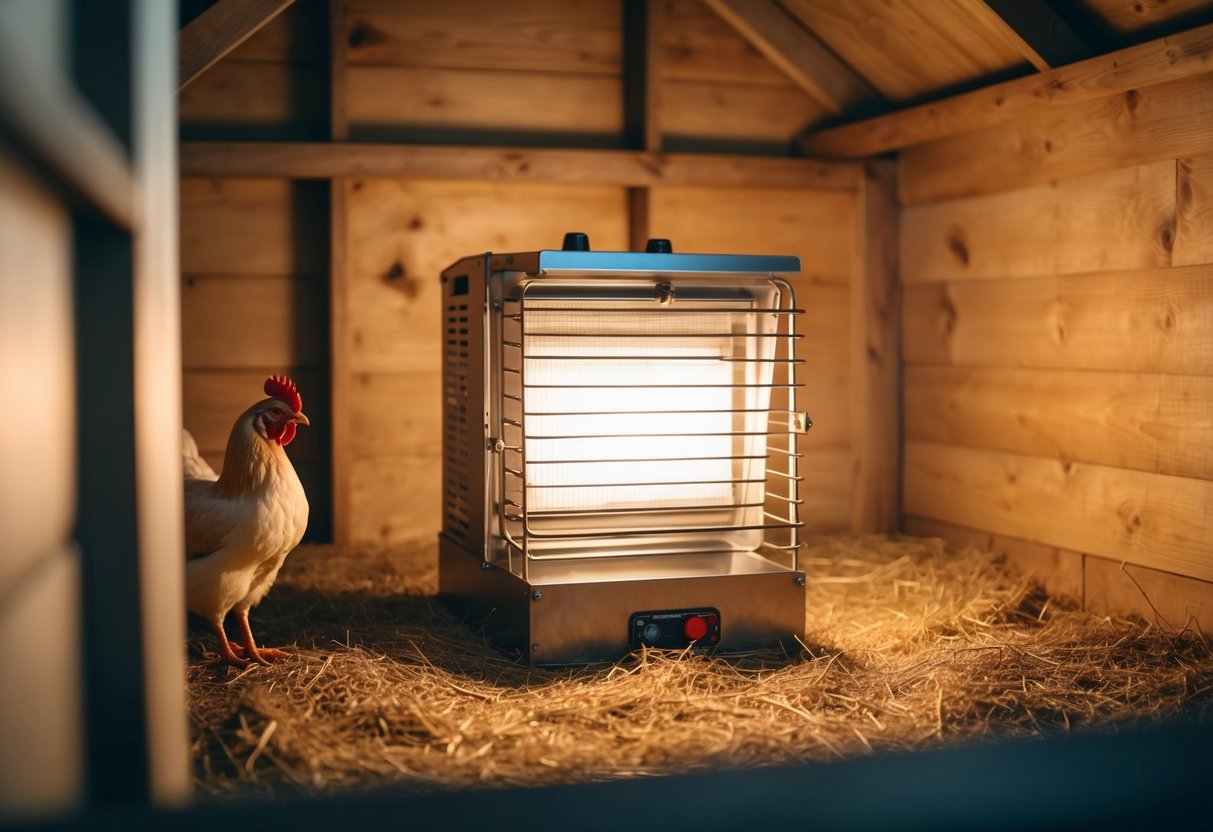
A small radiant heater can be a great addition to a chicken coop during winter. These heaters provide warmth without overpowering the birds.
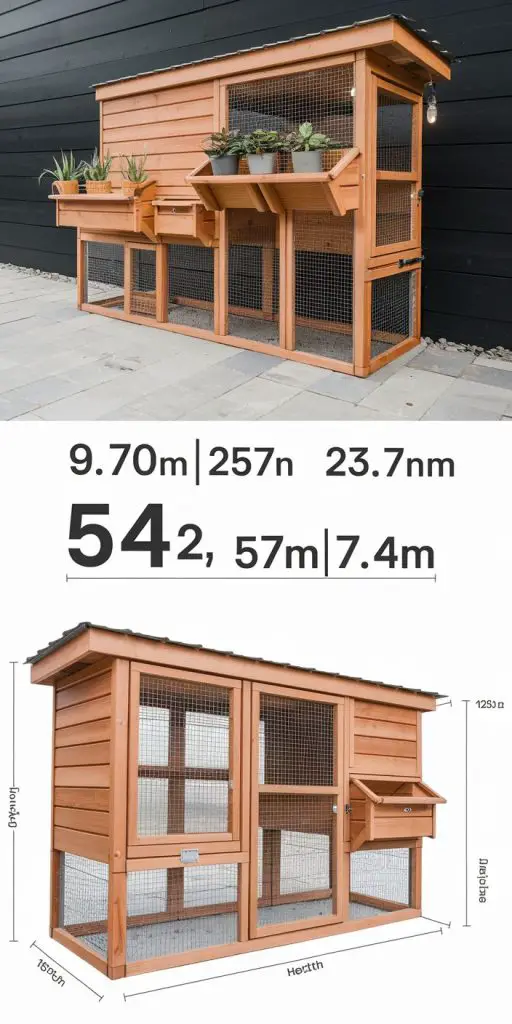
They use less energy and can help maintain a comfortable temperature inside the coop. It’s important to ensure they are safely installed to avoid fire hazards.
By using a radiant heater, chickens can stay cozy and healthy during the coldest months.
4) Create a nesting box ratio of one per 8-10 hens
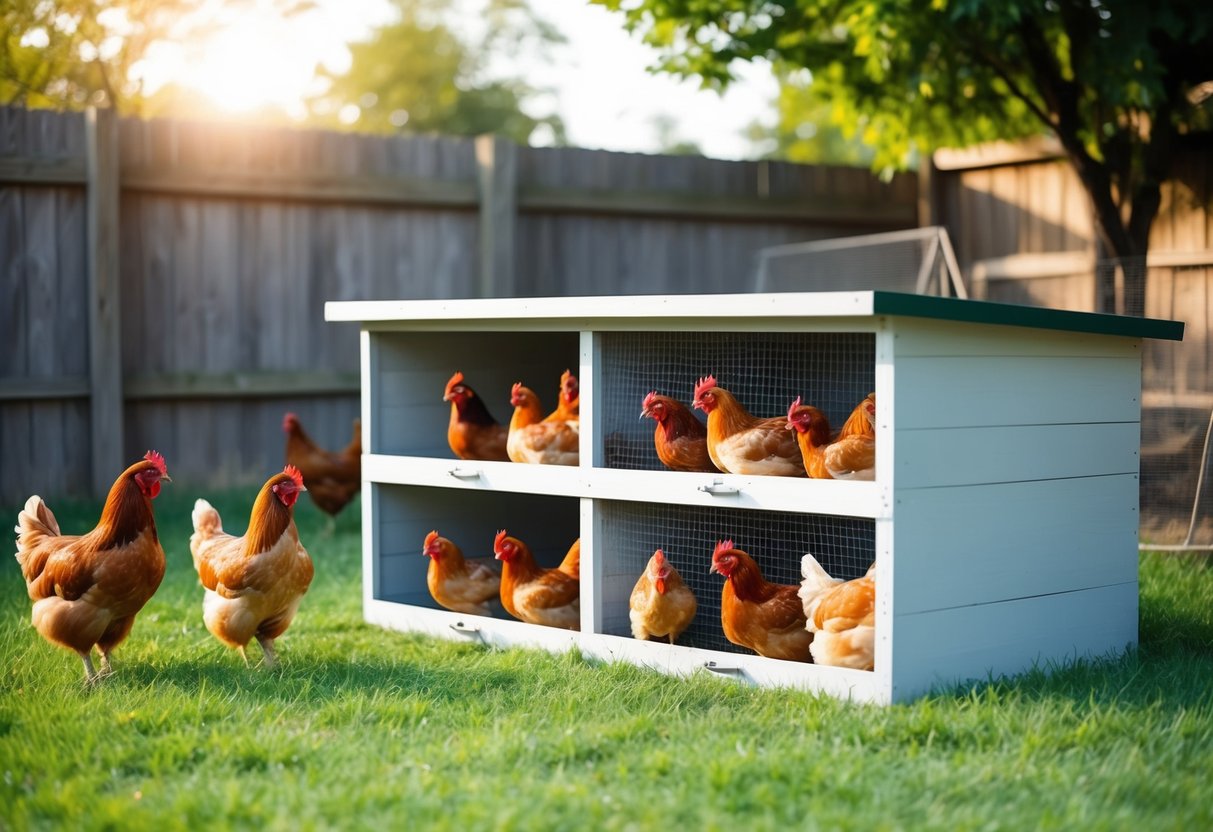
A good rule is to have one nesting box for every 8 to 10 hens. This helps ensure that each hen has enough space to lay eggs without crowding.
If there are too few boxes, some hens may not feel comfortable and could create stress within the flock.
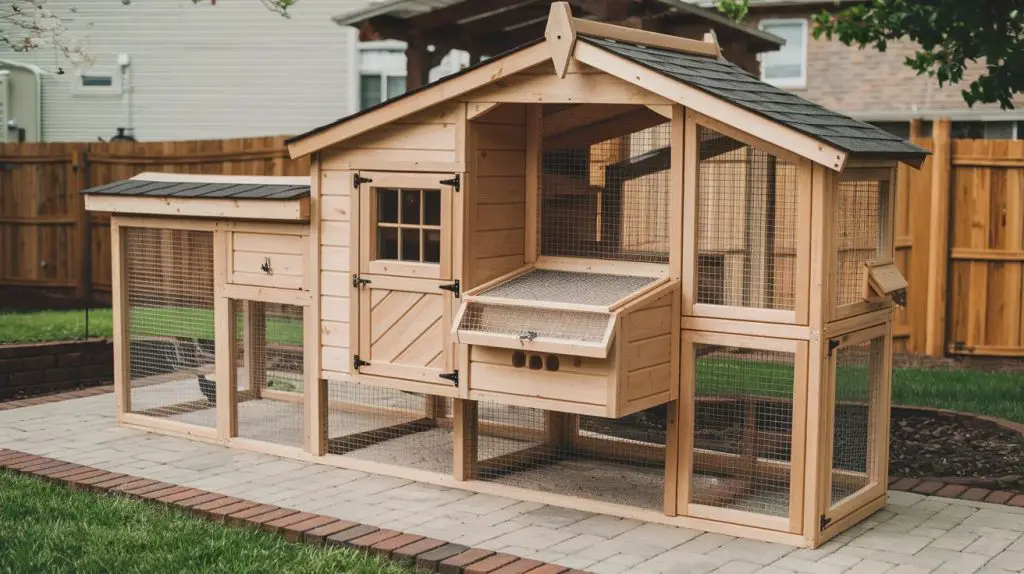
For a small flock of about 20 hens, two to three nesting boxes will work well. This setup encourages happy and productive chickens.
5) Use plastic coated timber for long-lasting framing
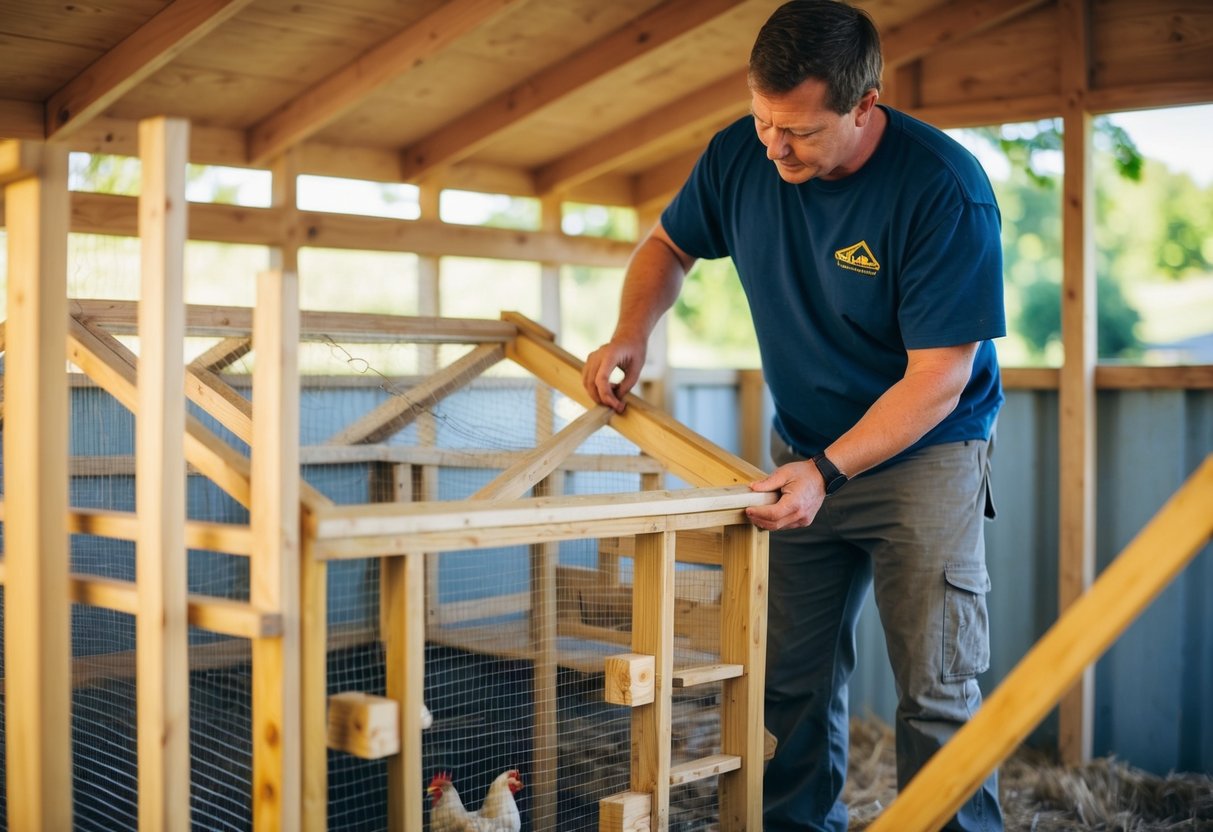
Using plastic coated timber can enhance the durability of a chicken coop. This type of wood is resistant to moisture and pests, making it ideal for outdoor use.
It provides a strong frame that can withstand various weather conditions. Additionally, the coating helps reduce maintenance needs, allowing for a more enjoyable chicken-keeping experience.
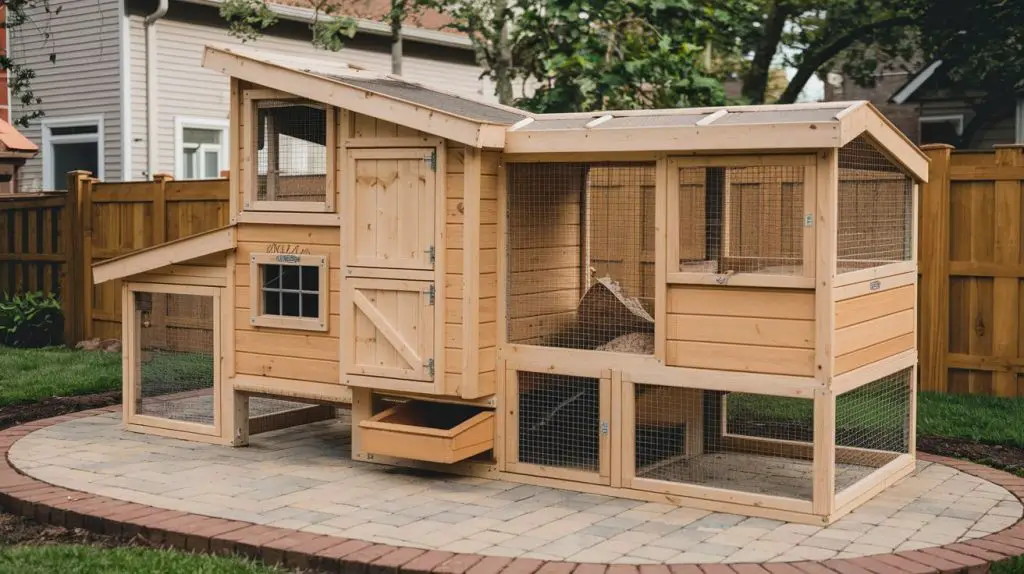
Choosing plastic coated timber means fewer worries about rot or decay over time. It’s a smart investment for anyone looking to build a reliable and long-lasting coop.
Materials and Tools Needed
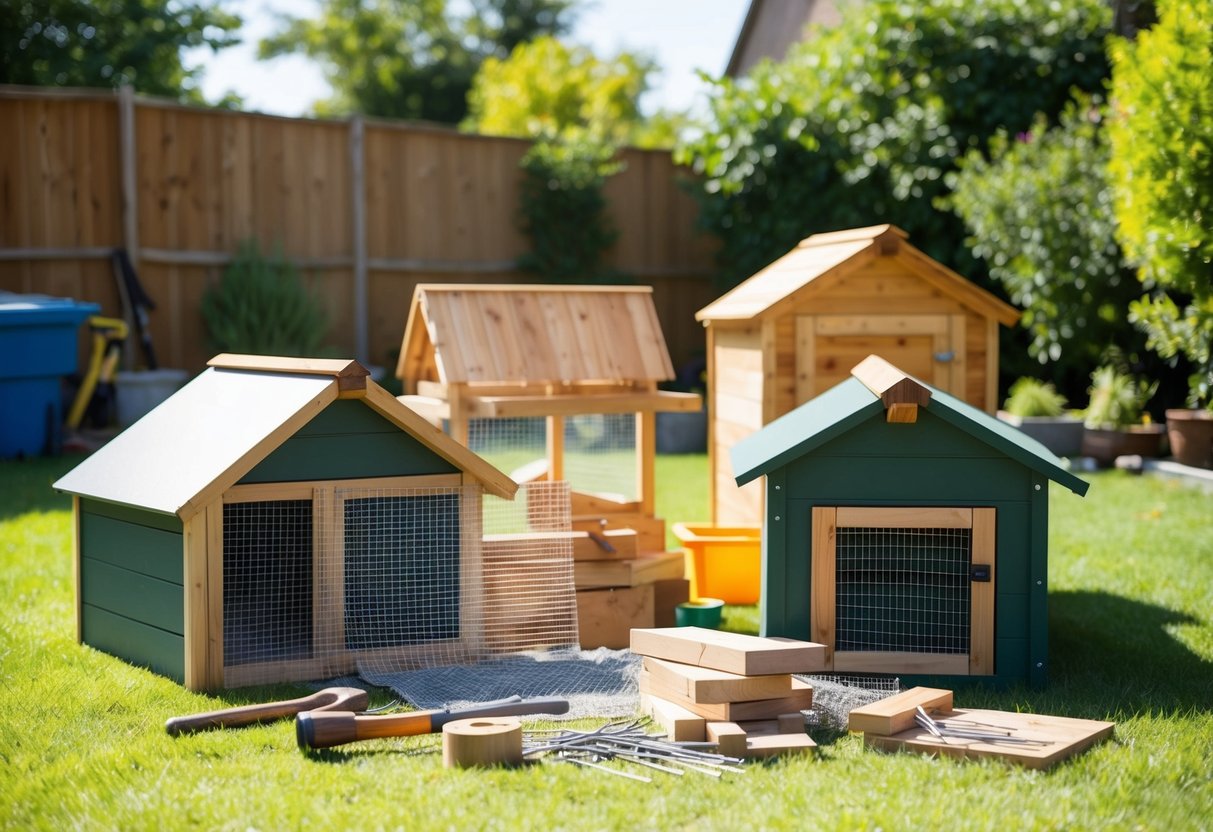
Building a chicken coop requires careful selection of materials and the right tools. This section details sustainable material options and essential tools to ensure a sturdy and efficient coop.
Sustainable Material Choices
When choosing materials, consider options that are environmentally friendly and durable. Wood is a popular choice, particularly untreated cedar or pine, as it resists rot.

Recycled materials can also be excellent. Look for old pallets, scrap wood, or even reclaimed doors. They not only save money but contribute to sustainability.
Wire mesh is essential for protection against predators. Use heavy-duty fencing for the coop’s run. Additionally, consider using non-toxic paints to ensure the safety of the chickens.
Insulation materials like straw bales or recycled denim can keep the coop warm in winter. This choice aids in energy efficiency and makes maintenance easier.
Essential Tools for Construction
To build a solid coop, having the right tools is key. Here’s a list of essential tools for the job:
- Circular saw: Ideal for cutting wood accurately.
- Drill: Necessary for making holes and securing screws.
- Screwdriver set: Essential for assembling various parts of the coop.
- Measuring tape: Important for precise measurements.
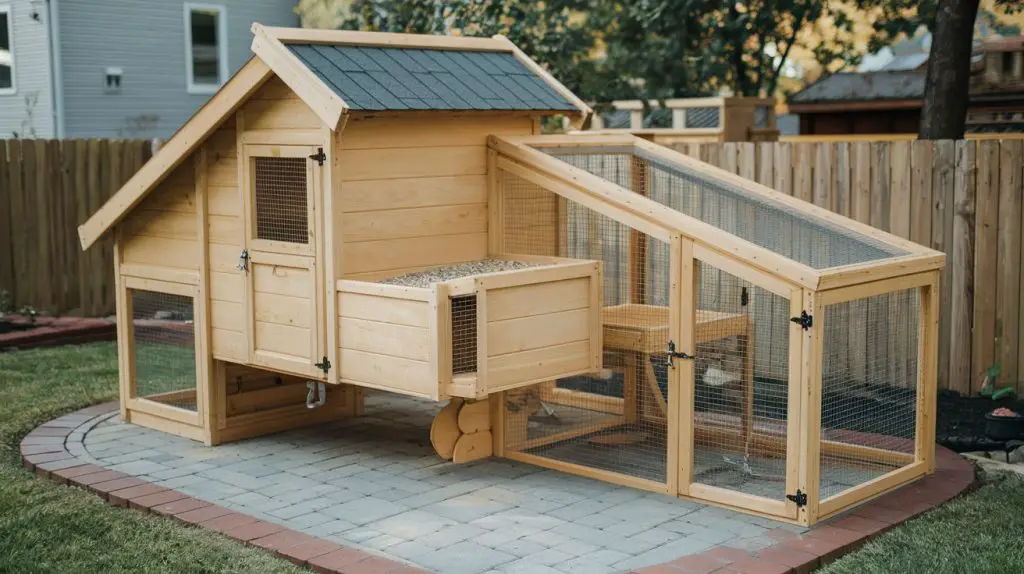
Additional tools like a level help ensure that everything is even, while a sawhorse provides a stable workspace.
Safety is important, too. Equip yourself with safety glasses and gloves to prevent injuries. Having the right tools streamlines the construction process and leads to a better-built coop.
Design Considerations
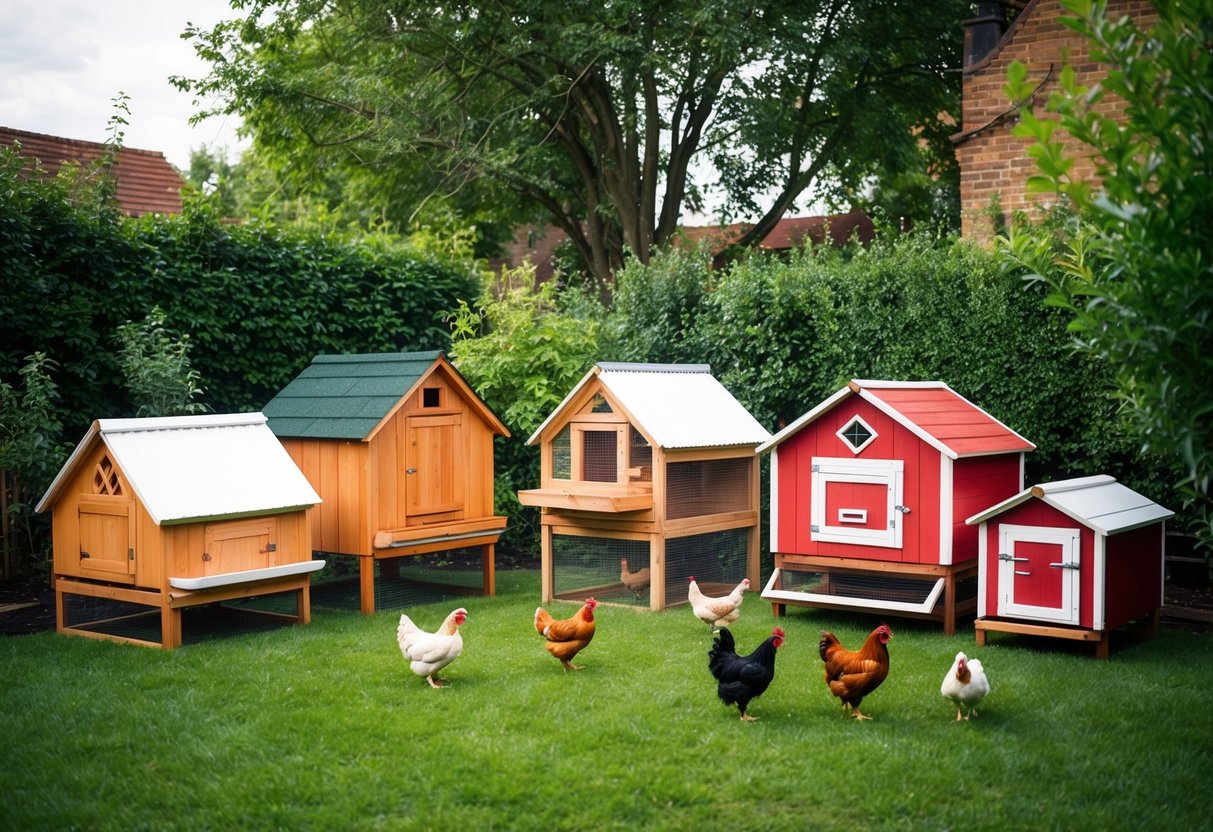
When designing a chicken coop, proper planning is crucial. The space must be well thought out to ensure the comfort and health of the chickens. Key factors include how much room the birds will have and how light and air will circulate within the coop.
Space and Layout Planning

Adequate space is essential for happy, healthy chickens. Each bird needs about 4 square feet inside the coop and 10 square feet in an outdoor run. This space allows them to move freely and reduces stress.
In terms of layout, it’s important to include designated areas for nesting, feeding, and perching. Placing the nesting boxes at a height that makes them easy to access is critical. Generally, nests should be around 24-30 inches from the ground.
A good layout also keeps the coop accessible for cleaning. Planning doors and exit points will save time and effort. Additionally, adding windows for natural light can enhance the chickens’ environment.
Ventilation and Lighting
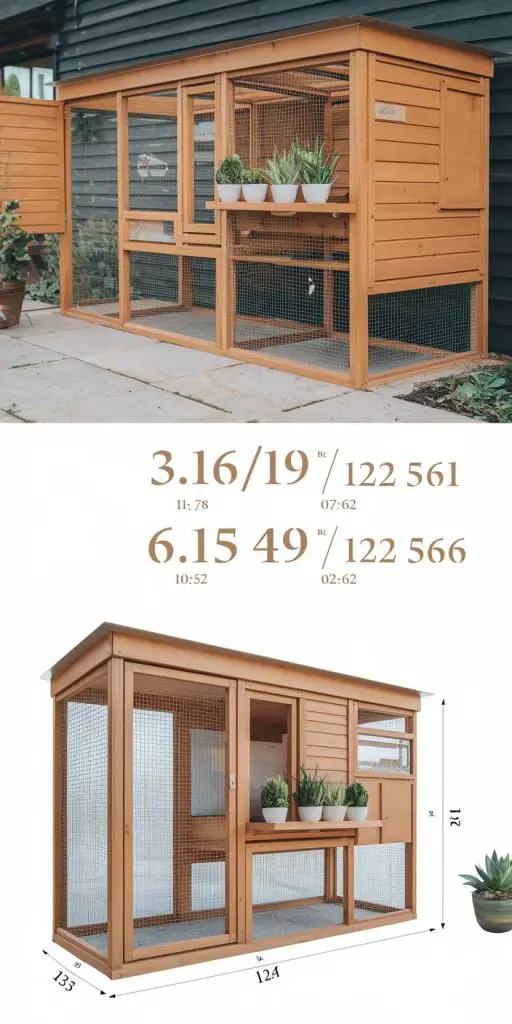
Ventilation is vital for maintaining a healthy environment in the coop. It helps to reduce moisture and prevents the buildup of harmful gases. Small openings at the top of the coop can allow for good airflow while protecting against drafts.
Natural lighting is another important aspect. Chickens benefit from several hours of sunlight daily, which can improve their egg production. Adding windows or transparent panels can maximize light intake.
Using mesh screens can maintain airflow while keeping pests out. Ensuring that the coop has multiple vents allows for better air circulation, keeping it fresh and dry. Proper planning of ventilation and lighting will create a healthy, productive space for the chickens.
Common Mistakes to Avoid
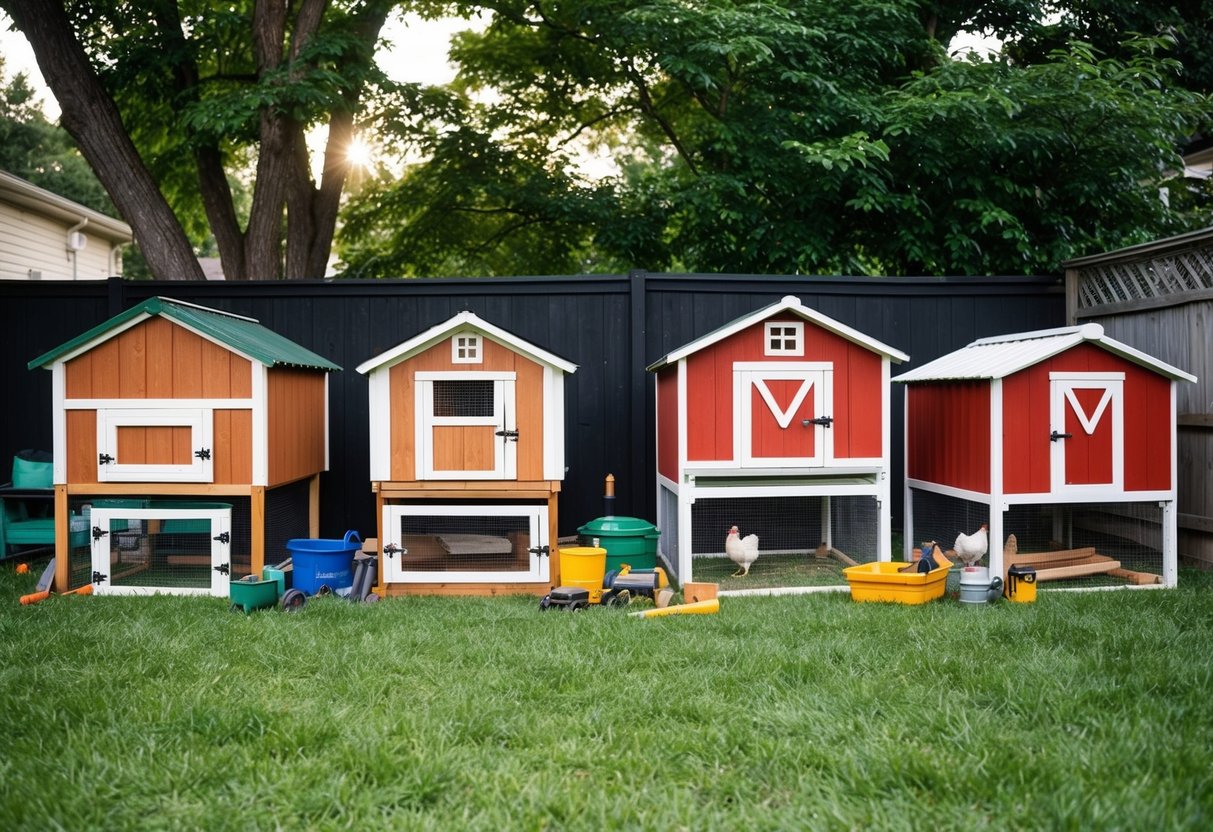
Building a DIY chicken coop can be fun, but it’s important to pay attention to certain details. This section highlights critical areas where mistakes often occur, which can affect the safety and comfort of the chickens.
Improper Insulation
Insulation is crucial for maintaining a comfortable environment for chickens. Without proper insulation, coops can become too hot in summer and too cold in winter.
- Use insulating materials like foam boards or straw bales. This helps regulate temperature changes.
- Seal gaps and cracks to prevent drafts. Chickens may suffer from chill if cold air seeps in.
- Consider ventilation too. It’s important to balance insulation with airflow. Good ventilation helps reduce moisture buildup, which can lead to mold and health issues.
Ignoring insulation can lead to stressed chickens and reduced egg production.
Ignoring Predator Protection
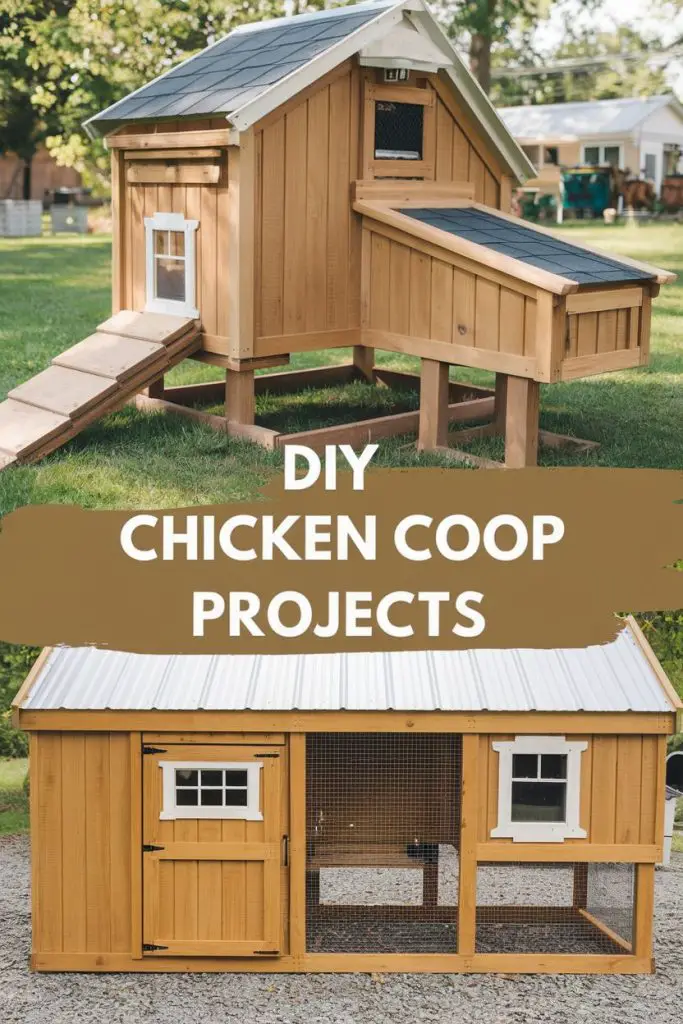
Predators pose a significant threat to backyard chickens. Failure to properly secure the coop can lead to devastating losses.
- Build a sturdy structure. Use strong materials like wood or metal. Avoid flimsy materials that animals can break into.
- Check for entry points. Ensure windows and doors close tightly and use secure locks.
- Create a fenced run. The fence should be tall enough and buried at the bottom to prevent digging.
Ignoring these protective measures can leave chickens vulnerable to attacks, compromising their safety and wellbeing.
Frequently Asked Questions
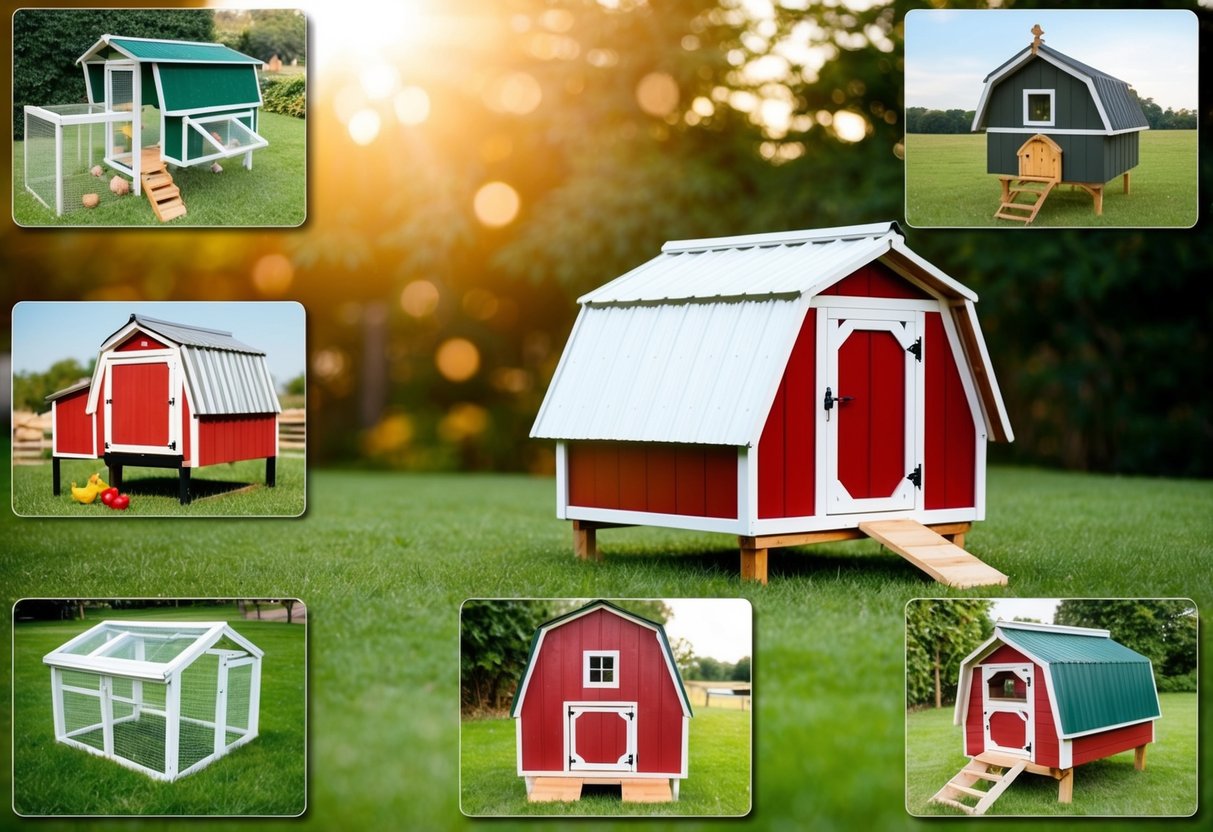
This section addresses common inquiries about building chicken coops. It covers budget-friendly options, design features, and important size considerations for the coop.
How can I build a chicken coop on a budget?
To build a chicken coop on a budget, homeowners can use reclaimed wood. This not only gives a rustic appearance but also helps save money. They should also consider materials on sale or leftover materials from previous projects.
Where can I find free chicken coop plans?
Many online resources offer free chicken coop plans. Websites like The Prairie Homestead provide detailed designs. Forums like Backyard Chickens also feature community-shared plans that are helpful.
What are the essential features to include in a DIY chicken coop?
A DIY chicken coop should have proper ventilation and natural light. Including large doors makes cleaning easier. A nesting box ratio of one per 8-10 hens is also crucial for egg-laying comfort.
How big should a coop be for a small flock of chickens?
For a small flock, the general rule is 4 square feet per chicken inside the coop. The run area should offer about 10 square feet per chicken. This space allows for comfortable movement and reduces stress.
What are some simple chicken coop designs for first-time builders?
Simple designs often feature basic square or rectangular shapes. Coops with pitched roofs can prevent water accumulation. Additionally, using easy-to-find materials simplifies construction for beginners.
Can you provide tips for building a walk-in chicken coop?
When building a walk-in chicken coop, prioritize height to allow easy access. Incorporate large doors for convenient entry and cleaning. A small radiant heater can also keep the coop warm during colder months.

